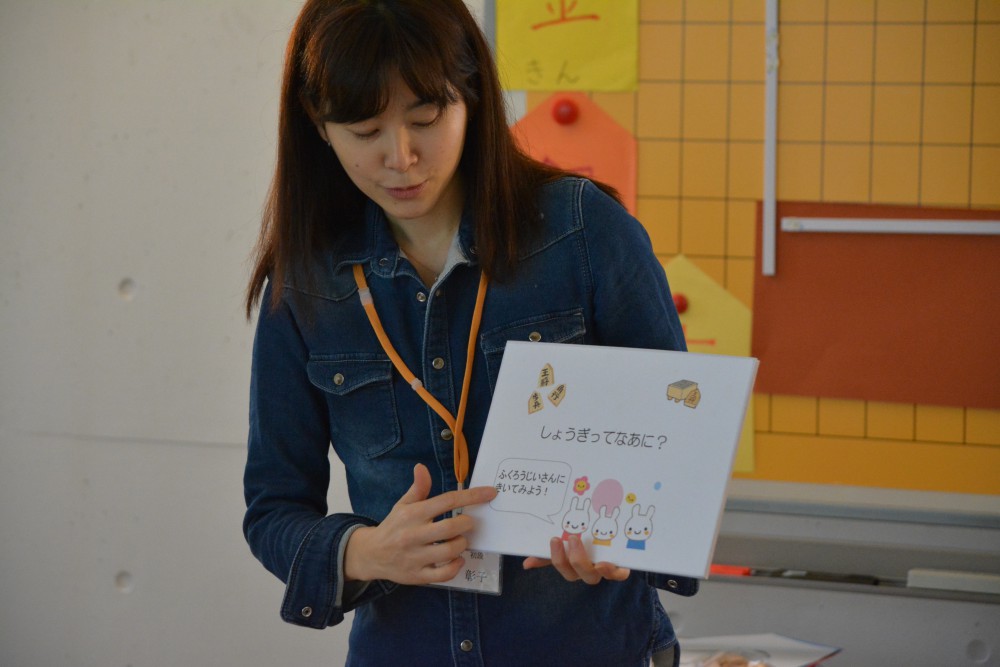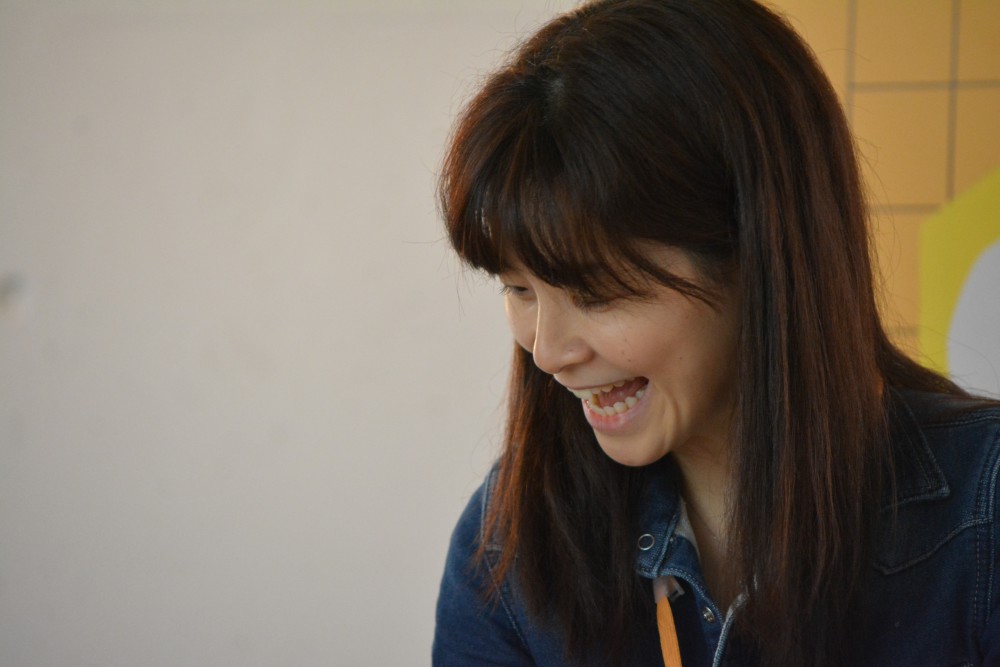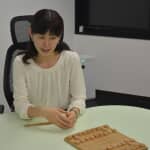Child-raising Shogi 19 October 2016
Five Tips from a Professional Player for Children
Explore art of Shogi. A professional Shogi player invites you to the world of Shogi along with traditional Japanese culture.
Today, I would like to share more specific points that instructors and parents should keep in mind when teaching children Shogi.
1. Find many upsides of children
Some instructors may think that novice children do not have many upsides due to their lack of technical skills. However, they actually have many good points in their behaviors and attitudes towards Shogi. For example, they can lay out pieces properly on the board, neatly place pieces in hand on the piece stand, and exchange appropriate greetings. Instructors should look at those and commend them rather than their technical skills.

2. Connect Shogi with something familiar to children
Shogi terms sound like alien talks to beginners, especially for children. So I recommend that instructors connect Shogi terms with something familiar to children. For example, I tell them “thin castle” of Shogi is like a straw house from The Story of The Three Pigs. Contrary to a straw house, a brick house is strong and solid but takes time to build. Since children already know what a straw house and a brick house are, this metaphor helps them to understand the function of “castle” of Shogi. In addition, when I want to tell children that HISHA is not working, I use personification technique and say, “Hey, your Mr.HISHA is crying because it cannot move.”
Actually, a good metaphor is quite difficult to think of. When I want to explain the definition of promotion to children, I tried to use Pokemon characters’ evolution. I did not know Pokemon names very well, so some Pokemon expert children complained that my Pokemon metaphor was rather difficult to understand the notion of promotion. I myself still try, fail and learn to be a good instructor. 🙂
Another good example is comparing Shogi pieces to money. Novice children do not hesitate to exchange major pieces such as KAKU and HISHA with minor pieces such as FU. This is called “Komazon (material loss)” in Shogi, and should be avoided. So, I explain children that Shogi pieces are like money. More specifically, I tell children that HISHA is 10000 yen and FU is 100 yen.
“Hey, you exchange your HISHA with FU. That is just like giving 10000 yen for 100 yen. Is that okay with you?”
Then, the child understands the big mistake he/she has just made. 🙂

3. Let them experience “Think, and we can do it!”
It is also very important to offer a clue to think about the next move for novice children.
“This piece is likely to be captured.”
“Oh, is this going to be Tsumi (checkmate)?”
Instructors should give inexplicit hints so that children can think by themselves and find their own solutions.
If children experience a success, they come to enjoy thinking, naturally. Instructors should not stick to victory, and sometimes lose to offer children a successful experience.
4. Remember that you can take time.
I think that some instructors have forgotten how hard it is to memorize all the piece moves since they already know them all. Please look back your old days. It was tough, wasn’t it? 🙂
It is really difficult for novice children to remember all the piece moves and the standard move sequences. Instructors should not scold children for not remembering what they learned in the previous lesson. It takes time to memorize the moves. I think many instructors experienced some difficulties themselves when they just started Shogi.
So, I propose to use Shogi proverbs. There are quite a few proverbs derived from Shogi such as
“Defend the king with three generals” and “A pawn-anchored gold is more solid than a rock.”
It is important to let children understand the meanings of those proverbs rather than just memorizing them. We hardly see the exact situations that those proverbs are applicable to. Yet, if children understand the meanings of the proverbs, they can use the proverbs in Shogi matches.
Proverbs stick in children’s minds, and thus are very effective to remember the piece moves.
“Wa no Shogi Karuta,” a traditional Japanese card game featuring Shogi, was produced by Kazu Takahashi, a ladies professional Shogi player ranked 3 Dan (A kind of ranks given to relatively high-ranked players.) This game contains easy Shogi proverbs with cute pictures.
This may be off the topic, but Takahashi-san and I went to school together, and our children are the same age. So, we have much in common and I always enjoy talking with her.
5. Instructors, enjoy yourselves!
Above all, I think that instructors should enjoy themselves with children. I myself enjoy my lessons with children. I think that children galvanize me, and I feel energetic after their lessons. I also learn a lot from children every time. When we, instructors enjoy ourselves in the lesson, so do children.
Not all the children in class want to be a pro in the future. You should not be under pressure to teach and train them to be a strong Shogi player. Let’s change your mindset when you feel a burden, and think that Shogi is useful for children’s growth as a person.

How are today’s five tips for teaching children Shogi?
Children need to understand the rules and also to be able actually move the pieces following the rules. Yet, children cannot always practice what they understand right away in the games. Sometimes, it takes time for them to be able to actually carry out what they have understood.
I hope you can help children to understand Shogi rules and also to experience “I can do that!” moments with today’s five tips.



